Travel Guide: Peru
Questions This Article Answers
What to see and do in Peru?
What to do in Lima?
What to do in Cusco?
Where is Machu Picchu?
What to do at Lake Titicaca?
Lima: The Culinary Capital of South America
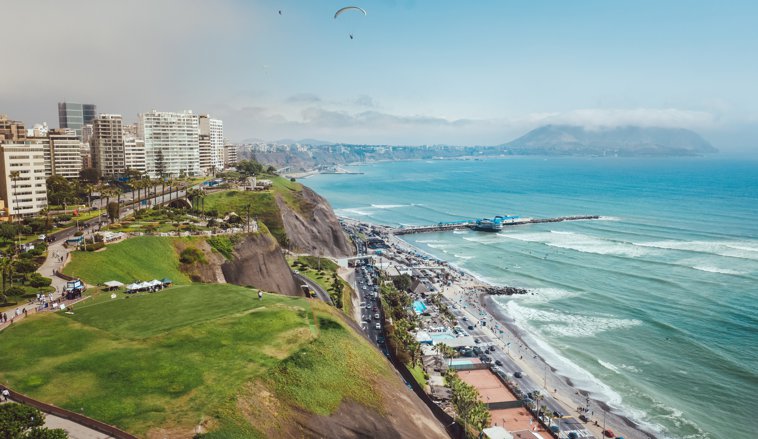 You can begin your journey in Lima(Lima), the bustling capital of Perú. Lima is renowned for its vibrant food scene, earning it the well-deserved title of capital gastronómica de Sudamérica(culinary capital of South America). All around the city you can sample delicious Peruvian dishes like ceviche(ceviche), lomo saltado(stir-fried loin), and causa(causa) in some of Lima's world-class restaurants.
You can begin your journey in Lima(Lima), the bustling capital of Perú. Lima is renowned for its vibrant food scene, earning it the well-deserved title of capital gastronómica de Sudamérica(culinary capital of South America). All around the city you can sample delicious Peruvian dishes like ceviche(ceviche), lomo saltado(stir-fried loin), and causa(causa) in some of Lima's world-class restaurants.
Día Nacional del Ceviche
Peruvians are serious foodies, so it's no wonder that the country's most iconic dish, ceviche, has its own national day on June 28. If you feel like joining in the celebrations next time the date comes around, check out our article on how to make the perfect ceviche!
You can start your tour of Lima in the city’s old town, known as the Centro Histórico(Historic Center). Here, you'll find colonial-era architecture, including the stunning plaza Mayor de Lima(Plaza Mayor de Lima) and the imposing Catedral de Lima(Lima Metropolitan Cathedral), where the remains of Francisco Pizarro(Francisco Pizarro) lie. You can also visit the Basílica y Convento de San Francisco de Lima(Basilica and Convent of San Francisco of Lima) to explore its eerie catacumbas(catacombs) filled with ancient bones.
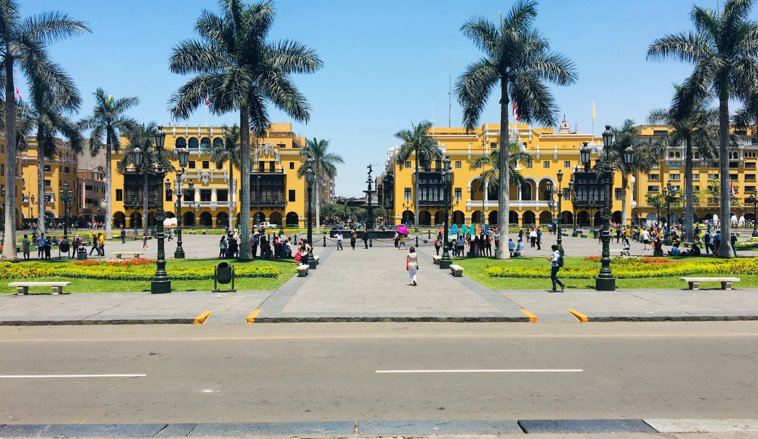 In the Barranco(Barranco) district, a charming area full of colorful houses and a lively nightlife, you can visit the Puente de los Suspiros(Bridge of Sighs). Next, you can head to Miraflores(Miraflores), an upscale district in the heart of the city. It's a real pleasure to stroll along the scenic malecón de Miraflores(Malecon of Miraflores) and visit the Parque del Amor(Love Park), a public park inspired by Antoni Gaudí’s Park Güell in Barcelona. While you’re there, you can take a selfie in front of El Beso(The Kiss), the famous statue that oversees the park.
In the Barranco(Barranco) district, a charming area full of colorful houses and a lively nightlife, you can visit the Puente de los Suspiros(Bridge of Sighs). Next, you can head to Miraflores(Miraflores), an upscale district in the heart of the city. It's a real pleasure to stroll along the scenic malecón de Miraflores(Malecon of Miraflores) and visit the Parque del Amor(Love Park), a public park inspired by Antoni Gaudí’s Park Güell in Barcelona. While you’re there, you can take a selfie in front of El Beso(The Kiss), the famous statue that oversees the park.
Before you leave Miraflores, it's worth paying a visit to Huaca Pucllana(Huaca Pucllana), an ancient adobe pyramid right in the middle of the district (There’s a very good restaurant next to the ruins too!).
Lima is also home to excellent museums such as the Museo Larco(Larco Museum), which houses a remarkable collection of pre-Columbian art.
Now, let’s go over some vocabulary related to Lima:
Cusco: Gateway to Machu Picchu
 Next, consider venturing into the heart of the Andes to discover Cusco(Cuzco), the historic capital of the Imperio inca(Inca Empire). The city's cobblestone streets are lined with colonial architecture as well as Inca ruins, creating a unique architectural blend.
Next, consider venturing into the heart of the Andes to discover Cusco(Cuzco), the historic capital of the Imperio inca(Inca Empire). The city's cobblestone streets are lined with colonial architecture as well as Inca ruins, creating a unique architectural blend.
From Cusco, you can embark on a journey to the world-famous Machu Picchu(Machu Picchu), one of the Nuevas Siete Maravillas del Mundo(New Seven Wonders of the World). Built for the Inca Emperor Pachacútec(Pachacuti) in the 15th century, the ancient stone citadel is located above the Valle Sagrado de los Incas(Sacred Valley of the Incas) and offers breathtaking views of the surrounding mountains.
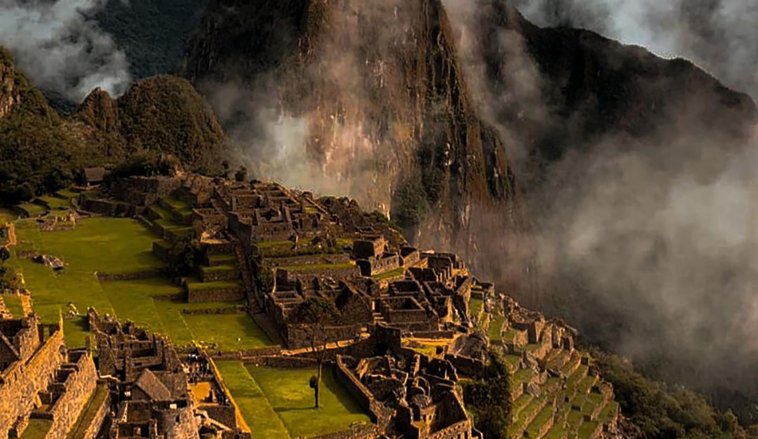 Back in Cusco, you can explore the lively San Blas(San Blas) neighborhood, where you can purchase local crafts and try Andean dishes like cuy(guinea pig) and bistec de alpaca(alpaca steak). The Catedral de Cusco(Cathedral of Cusco) and the Iglesia de la Compañía de Jesús(Church of the Society of Jesus) are worth a visit. Both are located in the plaza de Armas del Cusco(Plaza de Armas del Cusco), the city’s main square.
Back in Cusco, you can explore the lively San Blas(San Blas) neighborhood, where you can purchase local crafts and try Andean dishes like cuy(guinea pig) and bistec de alpaca(alpaca steak). The Catedral de Cusco(Cathedral of Cusco) and the Iglesia de la Compañía de Jesús(Church of the Society of Jesus) are worth a visit. Both are located in the plaza de Armas del Cusco(Plaza de Armas del Cusco), the city’s main square.
Cusco or Cuzco?
Depends on who you ask! Both are widely used. Historically, Cuzco is the Spanish colonial-era spelling, while Cusco is the name preferred by the locals.
Next, you might choose to walk along the calle Hatun Rumiyoq(Hatun Rumiyoq Street), a pedestrian walk next to the remains of an Inca wall that includes the perfectly-cut piedra de los doce ángulos(twelve-angled stone). If you'd like to learn more about the Inca civilization, you could also visit the historic sites of Coricancha(Coricancha) and Sacsayhuamán(Sacsayhuaman), where you can see llamas(llamas) and alpacas(alpacas) roaming around!
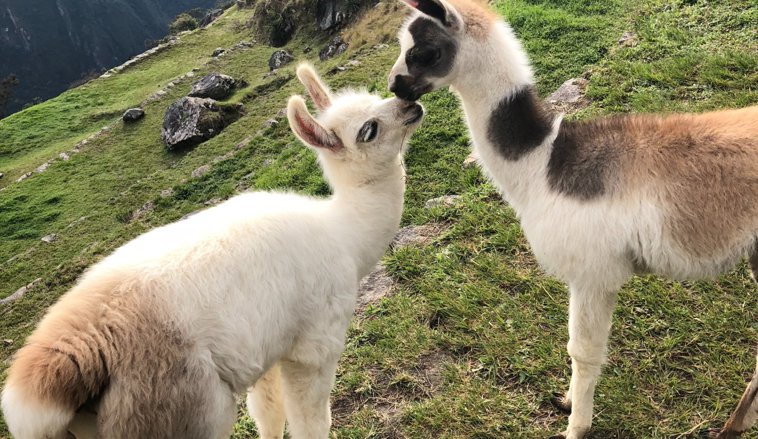 Let’s practice some vocabulary related to Cusco:
Let’s practice some vocabulary related to Cusco:
Arequipa: The White City
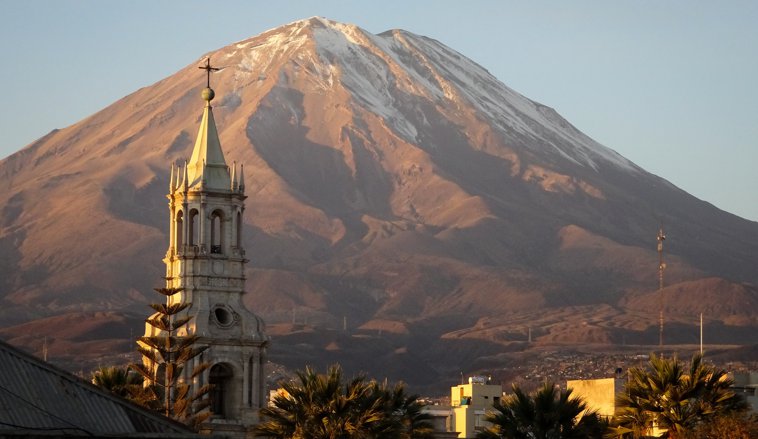 Known as the Ciudad Blanca(White City) due to its dazzling colonial architecture made of white volcanic stone, Arequipa(Arequipa) is a captivating destination in southern Perú. The city is framed by
three volcanoes, the most famous of which is the iconic volcán Misti(Misti Volcano).
Known as the Ciudad Blanca(White City) due to its dazzling colonial architecture made of white volcanic stone, Arequipa(Arequipa) is a captivating destination in southern Perú. The city is framed by
three volcanoes, the most famous of which is the iconic volcán Misti(Misti Volcano).
You can start your tour at the Centro Histórico de Arequipa(Arequipa’s Historic Center), by visiting the Monasterio de Santa Catalina de Siena(Monastery of Santa Catalina de Siena), a 16th-century convent that feels like a city within a city. Strolling along the charming plaza de Armas, it's possible to admire the Catedral de Arequipa(Basilica Cathedral of Arequipa), a masterpiece of arquitectura neorrenacentista(Neo-Renaissance architecture). Other sights include the Convento de la Recoleta(Recoleta Convent) and the Convento de San Francisco(Convent of San Francisco).
 In the Museo Santuarios Andinos(Museum of Andean Sanctuaries), you can catch a glimpse of Momia Juanita(Mummy Juanita), one of the best-preserved Incan mummies ever found.
In the Museo Santuarios Andinos(Museum of Andean Sanctuaries), you can catch a glimpse of Momia Juanita(Mummy Juanita), one of the best-preserved Incan mummies ever found.
The Yanahuara(Yanahuara) district, meanwhile, is known for its viewpoint, the mirador de Yanahuara(Yanahuara Viewpoint), which offers stunning views of the city and the volcán Misti framed by white stone arches.
Arequipa is also famous for its culinary delights, especially the spicy rocoto relleno(rocoto relleno), a stuffed pepper dish, and the renowned adobo arequipeño(adobo arequipeño), a type of pork stew.
Here are some words that will help you get around as you explore Arequipa:
Lago Titicaca: Birthplace of the Incas
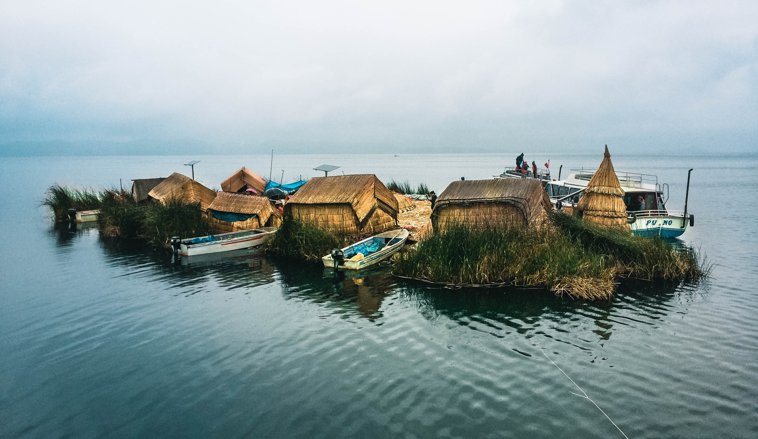 The lago Titicaca(Lake Titicaca), the largest high-altitude lake in the world, is sandwiched between Perú and Bolivia(Bolivia). This mystical lake is steeped in Inca mythology and is, according to legend, the birthplace of the first Incas.
The lago Titicaca(Lake Titicaca), the largest high-altitude lake in the world, is sandwiched between Perú and Bolivia(Bolivia). This mystical lake is steeped in Inca mythology and is, according to legend, the birthplace of the first Incas.
The two main attractions, the isla del Sol(Island of the Sun) and the isla de la Luna(Island of the Moon), are actually on the Bolivian side of the lake. The isla del Sol, the largest of the islands, is home to a number of ruins and archaeological sites.
The city of Puno(Puno) serves as the gateway to the Peruvian side of the lake. About 7 km off the shore of the city you’ll find the islas flotantes de los Uros(the floating islands of the Uros). These man-made islands, constructed from cañas de totora(totora reeds), are home to the Uros(Uros) people.
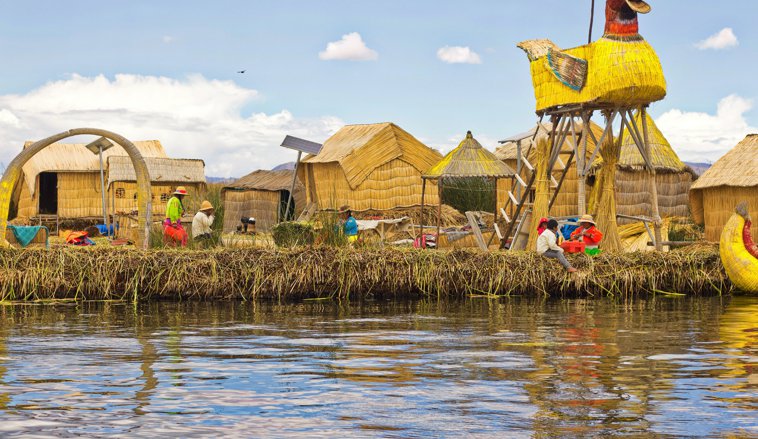
Birds as Fishermen
The Uros have trained cormorants to dive and catch fish, which they then deliver back to their trainers. The practice is known as cormorant fishing and has been used for centuries, not only in Perú, but in other parts of the world as well.
You can also take a boat to isla de Taquile(Taquile Island), famous for its intricate handwoven textiles, and isla de Amantaní(Amantani Island), where you can stay with local families and experience the rich traditions of the local Quechua(Quechua) inhabitants.
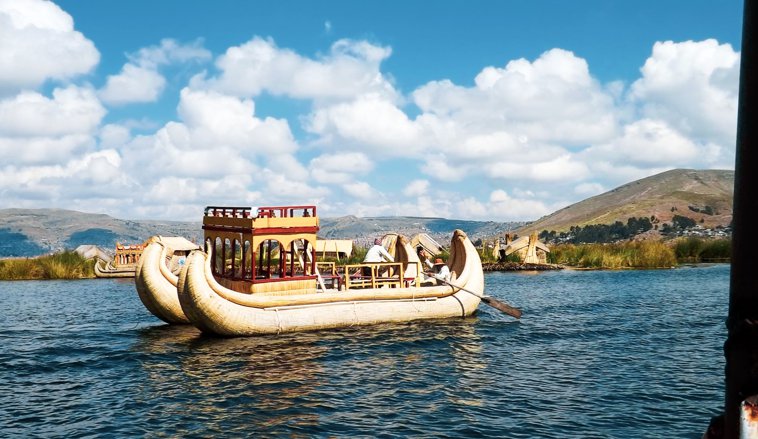 Here are some vocabulary words related to lago Titicaca:
Here are some vocabulary words related to lago Titicaca:
Ica: Discovering the Desert Oasis
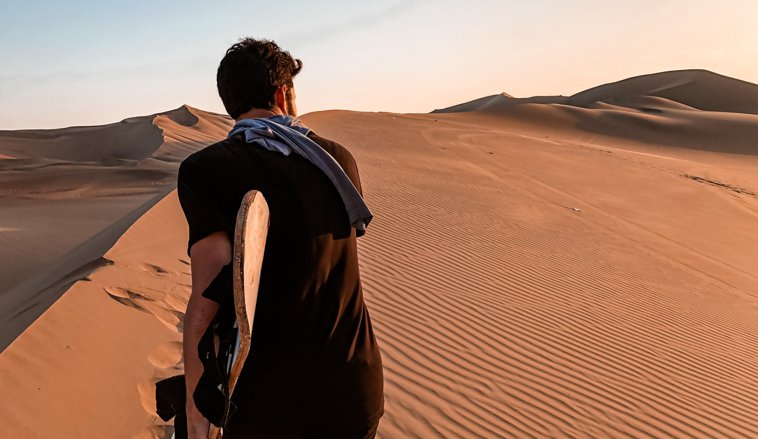 Ica, a bustling city in the southwestern portion of the country, is best known for its stunning desert oasis, Huacachina(Huacachina).
Ica, a bustling city in the southwestern portion of the country, is best known for its stunning desert oasis, Huacachina(Huacachina).
The immense dunas de arenas(sand dunes) surrounding Huacachina provide the ideal terrain for adrenaline-pumping activities like sandboarding and dune buggy rides. If you’re looking for a more serene experience, you can take a relaxing boat ride on the oasis. It's a good idea to go during the day, though, because the area is also famous for its lively nightlife.
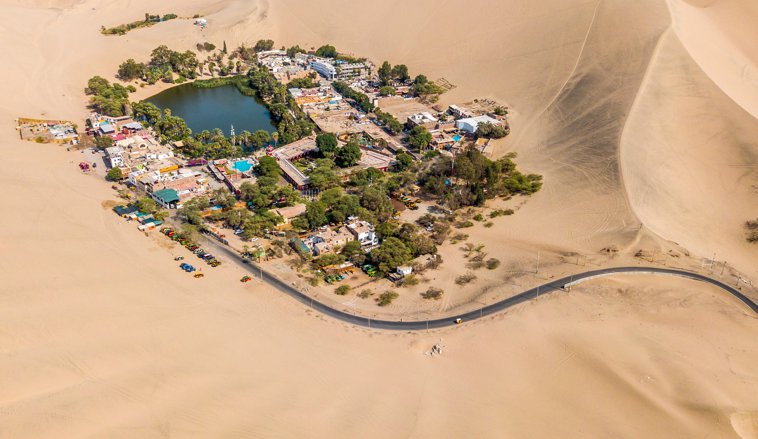 Back in Ica, you might choose to visit the Museo Regional de Ica(Regional Museum of Ica). The museum has an extensive collection of artifacts from different indigenous cultures from Perú, particularly the paracas(Paracas people). The collection includes momias, cerámicas (ceramics), and textiles(textiles), as well as a somewhat haunting number of cráneos(skulls).
Back in Ica, you might choose to visit the Museo Regional de Ica(Regional Museum of Ica). The museum has an extensive collection of artifacts from different indigenous cultures from Perú, particularly the paracas(Paracas people). The collection includes momias, cerámicas (ceramics), and textiles(textiles), as well as a somewhat haunting number of cráneos(skulls).
Also, while technically not in Ica, the nearby líneas de Nazca(Nazca Lines) are worth a visit. It's possible to take a flightseeing tour from Ica to see these mysterious geoglyphs etched into the desert floor, one of several Patrimonios de la Humanidad de la UNESCO(UNESCO World Heritage Sites) in Perú.
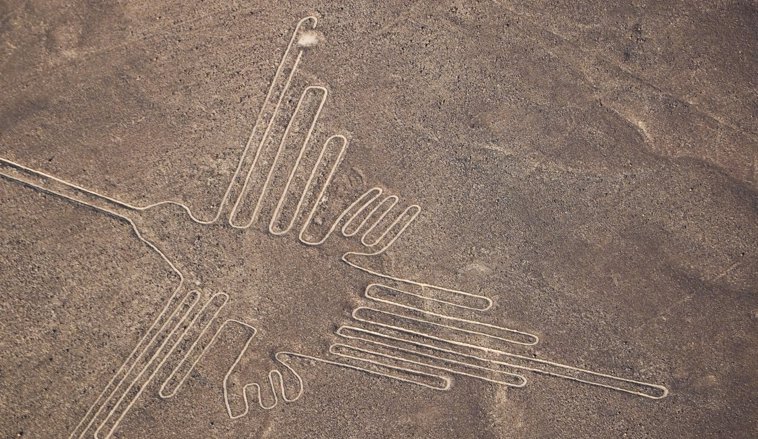 Now, some words related to Ica:
Now, some words related to Ica:
Check out the following articles for more great destinations to consider!














